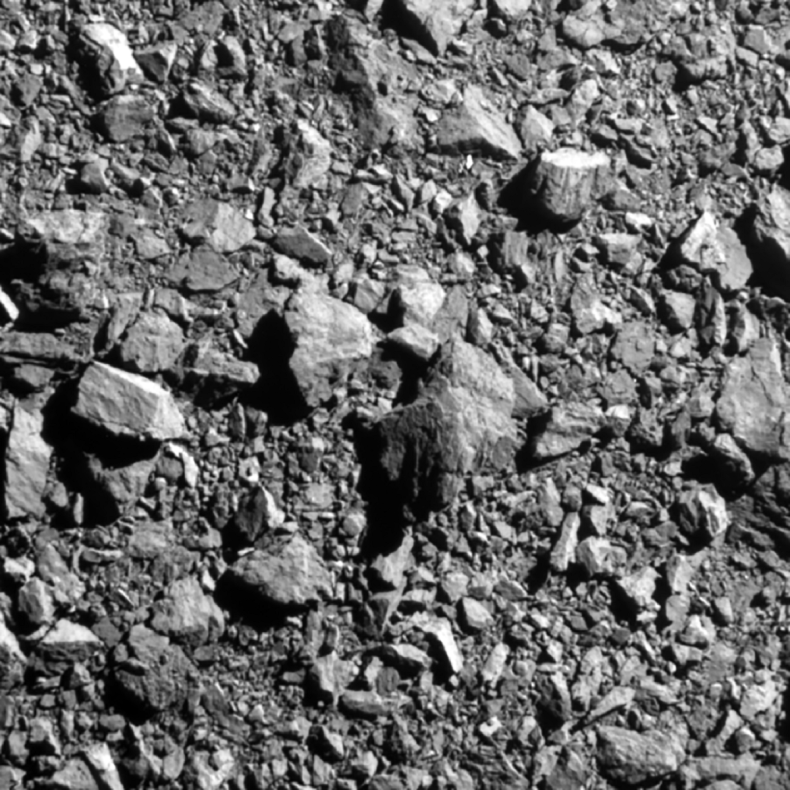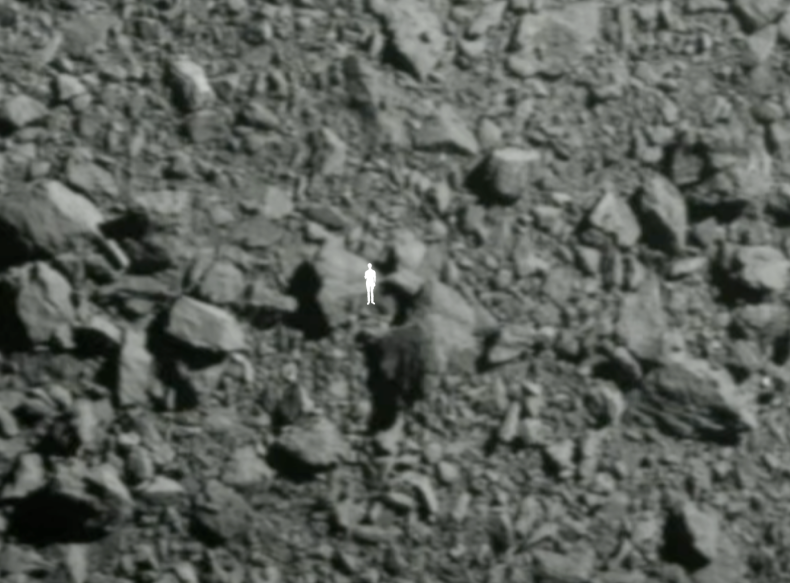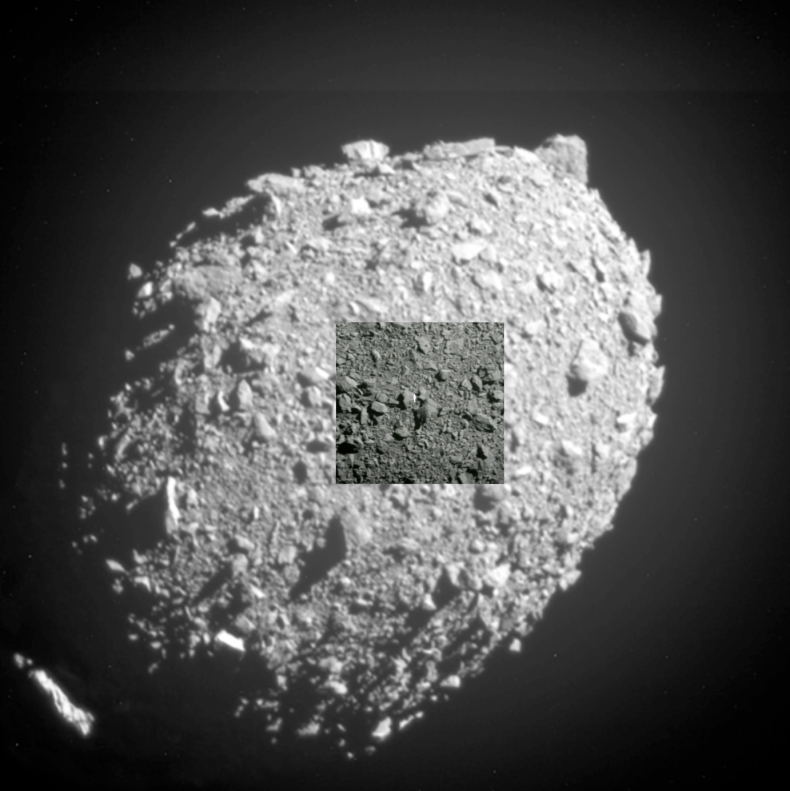A Reddit post has helped to put the true size of the asteroid moonlet Dimorphos—best known as the target of NASA's DART mission on September 27—into perspective by comparing it to a human.
Dimorphos has attracted global attention over the past two weeks after NASA slammed a small spacecraft into it at around 14,000 miles per hour as a test of our ability to defend Earth from an impending asteroid strike.
The idea was that altering Dimorphos' path through space even slightly could change its trajectory enough for it to miss Earth if it were on a collision course. NASA scientists are still studying the aftereffects of the collision to see if it worked.
Dimorphos is one part of a double-asteroid system and the smaller of the two. Measuring 530 feet across, Dimorphos orbits its much larger, 2,560-foot companion, Didymos. Neither poses a threat to Earth.
Shortly before the impact, NASA and the Johns Hopkins University Applied Physics Laboratory released a series of photos taken by the DART spacecraft shortly before impact. According to NASA, the image below shows a patch of the asteroid that is about 100 feet across. But it is still a bit difficult to put into perspective—without a caption indicating its true size, the rocks could be tiny beach pebbles or huge boulders.

Reddit user u/PM_CTD decided to get around this by adding a figure of a 5 foot, 10-inch human on one of the images, based on NASA's 10-foot diameter figure. The Reddit post can be found here.

"There were a few other posts on r/Space about DART, and all of them shared the common sentiment of a lack of scale," PM_CTD told Newsweek. "As someone who also struggled with this, I realized I could help other people by adding a scale myself. Luckily, NASA published exact figures for each photo taken, so it was easy to figure out how to size everything properly.
PM_CTD continued: "I also knew that some people tried to create a scale by comparing it to other buildings, like the Pyramids or the Eiffel Tower, but I felt that only shifted the problem to figuring out the scale of the buildings themselves. Showcasing the scale using a human would be the most intuitive way to do so, especially as the asteroid was just the right size for a person to be the perfect scale in a way that exemplified the magnitude of the achievement."
Another image shows a human figure added for scale on a wider shot that shows the entirety of Dimorphos, putting its size into perspective.

Professor Brad Gibson, director of the E.A. Milne Centre for Astrophysics at the University of Hull in the U.K., told Newsweek, "There's different ways of looking at it. NASA's analogy was that it was like throwing a golf cart at the Great Pyramid of Giza, but even that is not perfect."
For scientists, though, it is not the size of Dimorphos that they will be most concerned with but rather its weight.
"Dimorphos is about 5 billion kilograms and the DART satellite was about 500.... The asteroid weighs 10 million times that of the satellite, which crashed into it at 15,000 miles per hour," Gibson said. "It's really the difference in weight/mass which is the critical thing, rather than the size."
https://ift.tt/ZmBW9n1
Science
No comments:
Post a Comment